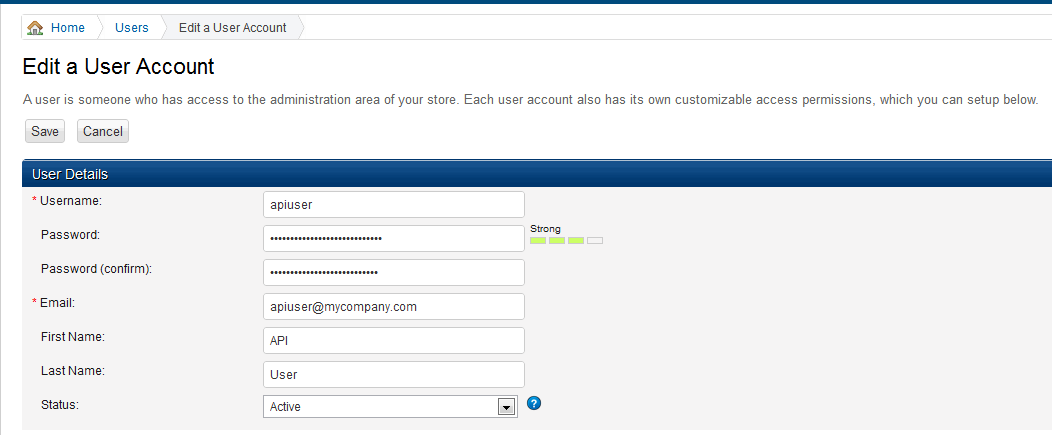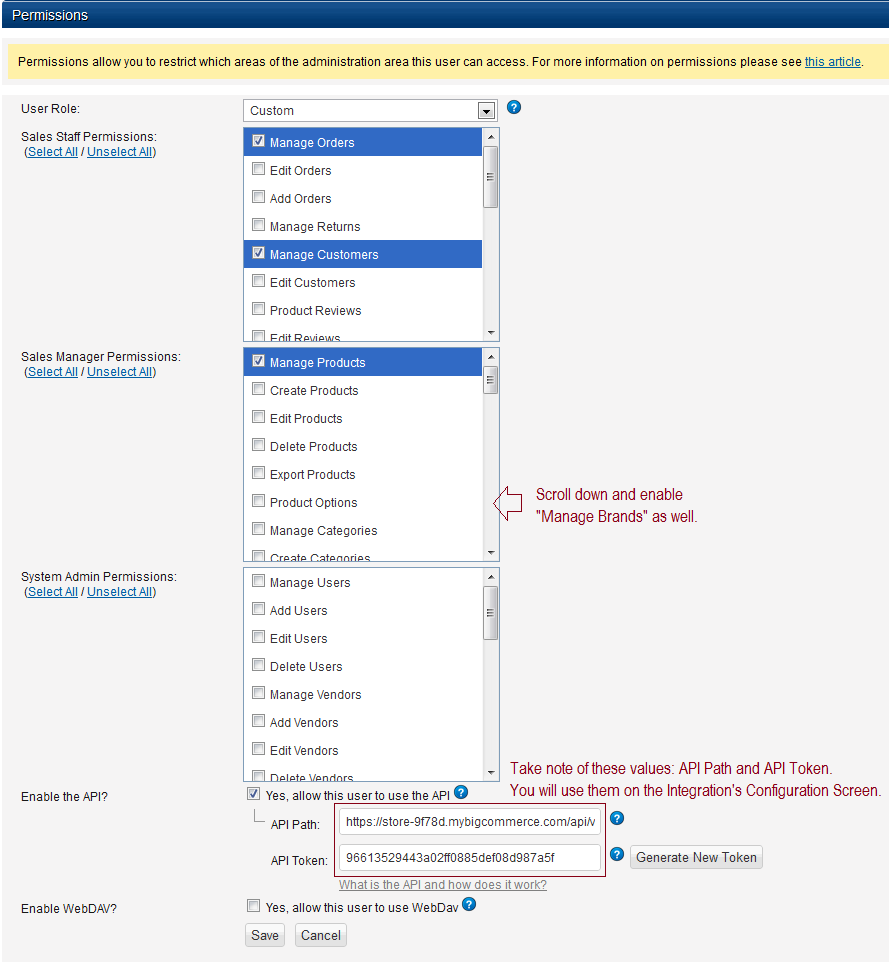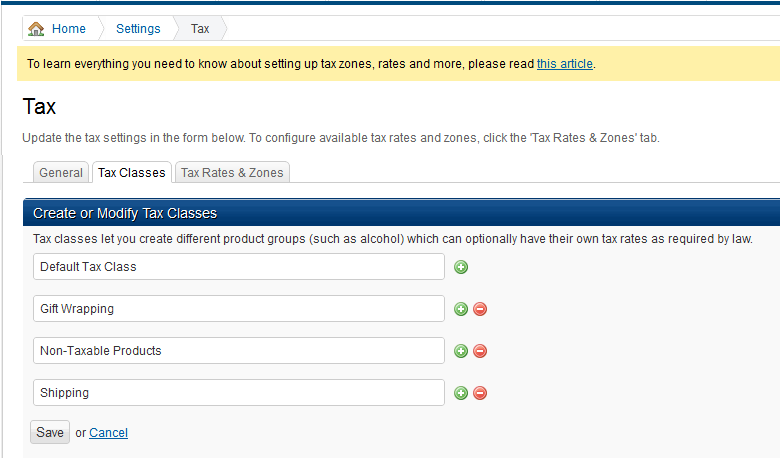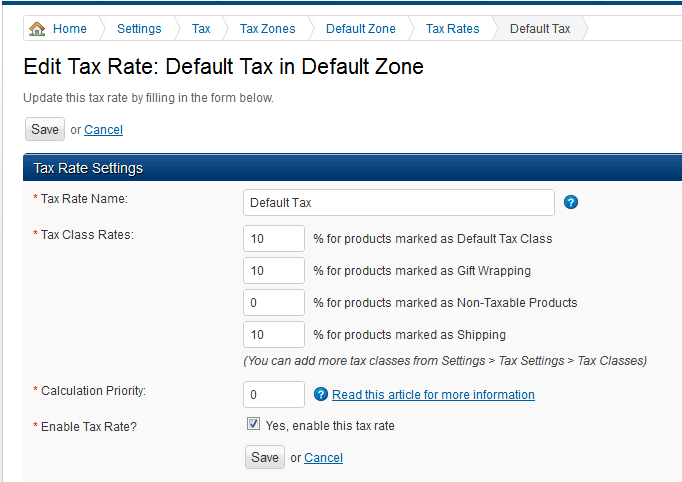This section describes the settings you need to change on your BigCommerce shopping site before using the Integration software for the first time.
Please make sure you also follow the instructions for the Settings in your Integration Software and Settings in your MYOB File.
Enable access to the API
To allow the Integration software to communicate with your BigCommerce shopping site you will need to create a BigCommerce user account or set up an existing one with the following role options:
- Sales Staff Permissions: Enable Manage Orders and Manage Customers
- Sales Manager Permissions: Enable Manage Products and Manage Brands
- Enable the API (take note of the API Path and API Token produced when you enable this option, you will need them in the Integration Software configuration screen)
To do this you will need to log in to your BigCommerce administration portal and go to the Users module from the menu at the top.


Tax Settings
Important:
Please be advised that although BigCommerce supports multiple tax rates for your products, the Integration software currently supports only the scenario where products are either taxable (with a unique tax rate for all of them, e.g. GST = 10%) or non taxable.
Below are the recommended settings for you taxes in BigCommerce. To access these settings click on the "Settings" menu at the top of you BigCommerce administration portal and select "Tax".
General tab
- Calculate Tax Based on: Store address, Shipping address or Billing Address.
- Shipping Tax Class: Shipping
- Gift Wrapping Tax Class: Gift Wrapping

Tax Classes tab
Make sure you have the following tax classes:
- Default Tax Class
- Gift Wrapping
- Non-Taxable Products
- Shipping
Please avoid using any extra tax classes than the ones in this list.

Tax Rates & Zones tab
Edit the "Under the Default Zone (Everywhere else)" zone and open the Tax Rates tab. Here add a single tax rate with the following values:
- Name: Default Tax (or any name of your choice)
- Tax rate for products marked as Default Tax Class: The tax rate for your taxable products. Example: for 10% enter "10" (without the quotes).
- Tax rate for products marked as Gift Wrapping: The tax rate for gift wrapping or order handling. Exampe: for 10% enter "10".
- Tax rate for products marked as Non-Taxable Products: The tax rate for tax free products. Enter 0.
- Tax rate for products marked as Shipping: The tax rate for freight. Example: for 10% enter "10".
- Calculation priority: 0
- Enable Tax Rate: Yes.



Product Settings
Every product in your BigCommerce catalog that you will be trading will have to be set with:
- A SKU
- A valid tax class
- Valid GL Accounts
Setting up the product's SKU
The SKU is the unique code of a product. Although BigCommerce does not enforce the use of it, it will be required by the Integration, so you must assign one to every product you will be trading.
Products included in invoices will be exported along to MYOB into the Items List, and the SKU will become the Item Number. The Integration will use this field to keep reference of the product in both systems.
The SKU is shown in your product list so you can easily identify what products are missing one.

To assign a SKU to a product open it in Edit mode and enter the SKU in the indicated field.

Important: The SKU must be unique and must contain a maximum of 30 characters, which is the capacity for an Item Number in MYOB.
Setting up the product's tax class
Open a product in Edit mode and then under the "Details" tab scroll down until you find the "Pricing & Pre-Order Options" option group. Example of one product show in the picture below.

Set the Tax Class to either "Default Tax Class" if the product is taxable (e.g. with GST) or to "Non-Taxable Products" if it's a tax exempt product.
Remember that the Integration currently only supports either one single tax rate for products or no tax at all, so make sure you use only these two tax classes and that the Default Tax Class is set to a single tax rate (e.g. 10%) and that the Non-Taxable Products is always set to 0%.
Setting up the product's GL Accounts
You will need to set the Income Account for every product in your catalog before sales can be exported to MYOB. To do this open the product in Edit mode select the "Other Details" tab. Under the Accounting Settings option group enter a valid account number in the "Income Account" field with the dash included.

If you buy or inventory this item in MYOB then also enter the Asset Account Number and the Expense/COS Account Number as well.
Note that these GL accounts must already exist in your MYOB database. Also make sure you use detail accounts, not header ones.
